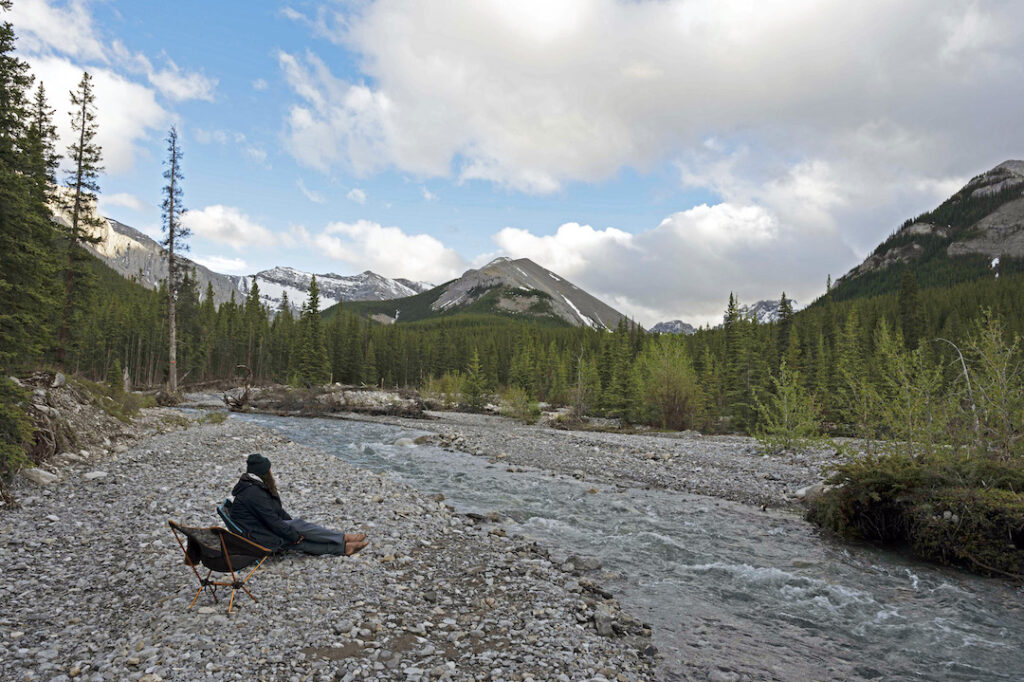By Hira Shah
When I say “environmentalist” – what image comes to mind?
Maybe you imagine someone recycling. Someone driving an electric vehicle. Or groups advocating for climate solutions outside city hall. There are so many ways to make positive changes for Alberta’s landscape. These changes make a huge difference and should be widely celebrated! But this image gives us only part of the picture of what environmentalism really is.
Environmental issues rarely stand alone. Most issues impacting Alberta’s landscape also intersect with social and political issues. Just take a look at coal mining in the Eastern Slopes of the Rocky Mountains. It’s well documented that coal mining will negatively impact the habitat, wildlife, and ecosystem processes in the region. However, it becomes more than just an environmental concern when we learn that coal mining will also affect the water supply of downstream communities, making it a health issue as well. What’s more, these impacts will disproportionately threaten certain communities more than others.
The Niitsítapi Water Protectors, an Indigenous-led grassroots group working to protect land and water of the Blackfoot Confederacy, summarized some of the threats that coal mining poses to Indigenous communities. Many of the proposed coal mining projects will restrict access to traditional Indigenous territory, disrupt cultural practices, and risk the health and safety of nearby Indigenous communities. This is a significant threat to Indigenous peoples who rely on that land and water to sustain their livelihoods.

The more we dig deeper, the more we see that across our nation, the consequences from environmental degradation are not a shared burden.
Photo Credit: Christopher Landry
We can’t simply ignore the fact that environmental degradation disproportionately targets or effects vulnerable communities, especially Black, Indigenous, People of Colour (BIPOC) groups. Leah Thomas, founder of the environmental justice advocacy group Intersectional Environmentalist, defines the term as “an inclusive form of environmentalism advocating for the protection of all people and the planet.”
Being a better environmentalist means looking at the bigger picture. Sometimes, the hidden picture. Let’s go back to that image of an “environmentalist” from earlier. Studies have shown that achieving this westernized ideal image of an environmentalist can prove to be much more difficult for BIPOC communities. Unfortunately, not all environmentally favourable behaviours are inclusive. Not all individuals have the same privileges to participate in these behaviours.
As a child, I was proud to consider myself an environmentalist, despite not fitting the traditional image. To me, a BIPOC newcomer to Canada, being an Page 22 Reduce barriers for individuals and communities that feel unwelcome or excluded from the outdoors environmentalist was simply appreciating the natural beauty around me, which was something I wasn’t able to do in my home country. I remember constantly being corrected by peers that I couldn’t be an environmentalist unless I did this or that. To me, environmentalism wasn’t necessarily about doing. It was simply about feeling. It wasn’t until much later in my life that I was able to take those feelings and turn them into action.
I don’t believe there is a one-size-fits-all answer to being a better environmentalist. But I know that not feeling welcomed by the community is a huge barrier when it comes to taking action. So maybe the best thing that we can do as environmentalists is to expand our definition of the term. Let’s strive to advocate for the planet and for its people. Let’s allow for a more inclusive image of an environmentalist so that even more people can see themselves defined as one.
So what then is the secret to being an environmentalist?
Well, if you get that “feeling” when you’re outside in nature — you know the one — well then welcome to the club.
More Blog Posts

Speak Up, Write Out: The Power of a Local Op-Ed

Fine Issued to Forestry Operator for Erosion Control Failures


